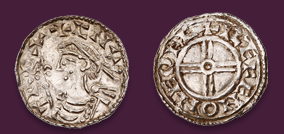
Auction: 7012 - Orders, Decorations, Medals & Militaria
Lot: 118
A Fine South Africa Campaign Group of Four to Lieutenant-Colonel H.L. Davies, Commandant of the Basuto Contingent and Ever Present Throughout Griffith´s, Brabant´s and Bayly´s Command of the Field Force at the Siege and Capture of Morosi´s Mountain Stronghold, 1879, Later Commissioner of Cape Police South Africa 1877-79, one clasp, 1879 (Commdt. H.L. Davies. Basuto. Contingt.), partly officially corrected; Cape of Good Hope General Service 1880-1897, one clasp, Basutoland (Commdt. H.L. Davies. Staff Office), engraved in upright serif capitals; Queen´s South Africa 1899-1902, two clasps, Cape Colony, Orange Free State (Lieut:-Col: H.L. Davies. Cape P.D.I.); King´s South Africa 1901-02, two clasps (Lt. Col: H.L. Davies. C.P. Dist. I.), last partly officially corrected, good very fine or better, with portrait photograph of recipient (4) Estimate £ 800-1,000 Lieutenant-Colonel Henry Lee Davies (1851-1912), born King William´s Town, South Africa; appointed Assistant Clerk to C. Griffiths (Governor´s Agent in Basutoland), 1871; Second Clerk to the Governor´s Agent, 1873; Deputy Post Master 1874; First Clerk and Post Master 1876; Resident Magistrate of the Thaba Bosigo District, 1877; he occupied this post as unrest and conflict grew in surrounding districts and territories, in particular with the Gaika and Galeka tribes and then through into Zululand. This unrest manifested itself in Basutoland with the Baphuti tribe. Led by it´s tactically astute military commander Morosi, the tribe rose up in defiance of the restrictions being placed upon them by the governing authorities. They were further encouraged by the British disaster at Isandhlwana, persuading the Cape Government to raise a force of two thousand Basuto Levies to quell the rising. As Magistrate, Davies would have played an organising role in raising the troops and with the rank of Captain he moved (March 1879) with the force to Palmietfontein on the edge of Morosi´s territory. The force under the command of Griffiths consisted of Chief Lerothili and Jonathan´s men, one hundred Cape Mounted Riflemen, three hundred Cape Mounted Yeomanry, a number of Fingo Levies under Captain McLean and fifty troopers of the Basutoland Mounted Police commanded by Lieutenant Gaffney. On the 16th March 1879 Griffiths´ sent his entire force to move on Morosi´s mountain stronghold. The latter had formidable natural defences, combined with loop-holed ´Schantzes´ (walls). The Mounted Police and Davies with the Basutoland Contingent acted as scouts, screening the column´s advance on the stronghold. Chief Lerothili moved up the north bank of the Orange, skirmishing and capturing cattle along the way, whilst Davies commanded those detached to the right of the column, leading various patrols. On the 25th of March Griffith´s force camped astride the main route up to the mountain. On the 6th of April he was re-enforced with a further troop of the Cape Mounted Rifles, and two seven pounder mountain guns. The assault began at dawn two days later. Despite a sustained period of heavy shelling, the initial full frontal attack on the stronghold was repulsed by heavy rifle fire from within. The defensive strength of the position combined with the attacking force´s lack of assault ladders lead to a general retirement at dusk. Griffiths´ force had suffered 5 men killed and 17 wounded. Two Cape Mounted Riflemen were awarded the Victoria Cross for there part in the attempted assault. The besiegers were re-enforced with the arrival Colonel C.Y. Brabant and 140 Cape Mounted Yeomanry. Included in the party was a twelve pounder which had been moved into position by 200 burghers. With the arrival of the new mounted troops and the stark failure of the assault, Griffiths pursued a different strategy. The crops in the surrounding area were destroyed and the tribe´s cattle captured. Davies led many of these raids, ´Started on 22nd for the purpose of recovering certain horses belonging to men of my contingent which had been stolen by the enemy at the Sebapala River. Force: Basutos under Chiefs Bereng and Alexander Letsie, Popoosi Sikuke and Leshuburn, likewise a detachment of the Basuto Police and Volunteers under Chiefs George and Ntsane Moshesh. In all about 750 men. 1st day - reached cave near Sijamolodi´s Village, capturing 150 sheep and goats. Camped close to the cave - strongly fortified and apparently well-manned....... The enemy was evidently expecting attack and due to our numbers abandoned the cave during the night, which greatly surprised me when on entering it I found it a large and formidable one. Threw down the fortifications-consisting of "Schansen" built of ironstone boulders....... The left division came on another cave in the river and finding it occupied attacked and got inside...... but as the cave was deep, with many caverns they had to retire with the loss of 1 killed and 1 wounded´ (report from Davies to Griffiths headed ´Camp Qoboshianing, 29th April 1879´ refers). On the 15th of May a detachment under Colonel Brabant left the Field Force to patrol fifteen miles up the Quthing. Brabant´s force consisted of 85 Cape Yeomanry, a seven pounder and 100 Basutos commanded by Davies. Not long into their patrol they found a concentration of enemy forces in a deep gorge running at right angles to the river. Once again the tribesmen had made the most of natural defences - one end of the gorge was too steep to attempt a descent and the other had several cellar like caves, the passages to which were protected by loopholed stone walls. Over the course of three days Brabant´s men shelled the position with artillery fire and hurled dynamite in to the entrances of the caves. Davies, due to his knowledge of the local dialect, attempted to induce the natives to surrender by reasoning with them. He eventually succeeded, with both Chief Riza and Letseka´s men agreeing terms The Baphuti lost fifteen men killed, eighty-two were made prisoner, ten of this number had been wounded and three hundred women and children accompanied the men. (Davies received a mention in Brabant´s report) On the 30th of May Brabant assumed command of the main field force. He struggled to make an immediate impact however, with Morosi´s men undertaking several daring raids outside of their fortified position. A picket of Yeomanry was surprised during the night at the cost 21 killed or wounded. On a similar occasion a C.M.R. patrol was ambushed, with Morosi´s men killing one of their number before taking another prisoner. The following morning the prisoner´s head was displayed on a pole and his body thrown over the wall. On the 5th of June another direct assault was attempted, this also ended in failure and ultimately led to the desertion of Chief Lethordi´s men from the Basuto Contingent. Davies was made Commandant of the remaining 286 men. With the onset of winter Brabant met Morosi under a flag of truce in September and October, but to no avail. This led to another change of command, with Colonel Bayly of the Cape Mounted Rifles filling the post. The make up of the besieging force also changed with its commander, the Yeomanry, burghers, and many of the levies returned home leaving Bayly, his Regiment and Davies with his force of Basutos. Bayly conceived a new plan for one final assault on Morosi´s stronghold. His troops, complete with 25 scaling ladders were to attack from five different positions. After three days and nights of continuous shelling the assault commenced at midnight on the 19th of November. Fifty of Davies´ men were sent in with the 1st and 2nd storming parties. Their role was to carry the scaling ladders. The storming parties were met with a withering fire from inside of the fort, and the assault seemed to be coming to a similar conclusion to its predecessors, with Davies´ men capitulating first. The Basutos dropped the ladders they had been entrusted with and ran in the opposite direction. Fortunately the resolve of the Cape Mounted Rifles stayed true, they hoisted the ladders onto their shoulders and pressed home the attack with the point of a bayonet. The rear walls crashed under the weight of the attack and the fort was carried by sunrise. Seventy of Morosi´s warriors lay dead, however a great number managed to escape during the melee. With Morosi´s revolt put down, Davies returned to his position as Magistrate. Unrest remained in the territory, however, due to the government´s policy to disarm the Basutos. Davies found himself placed in a difficult position, torn between having to carry out his orders and his sympathetic feelings towards the Basuto people, ´I am very heavily handicapped in having now to look out the new order of things:- nor can I fail, under the circumstances of the case, to be partial to the loyals, who have fought side by side with us and risked their lives to save ours. It is therefore in the interests of the Government as well as in my own that I should be removed from Basutoland.´ (Letter from recipient to the Acting Governor´s Agent, dated 17.11.1881, refers) Davies´ request was granted and he was appointed a Commissioner in the Cape Police, 31.8.1882; Justice of the Peace, 14.10.1882; during the following three years he served as Commissioner of Districts 5, 3 and 6 respectively before moving to District 1 (the Eastern Province) with the re-organisation of the system; with the outbreak of the Boer War the Cape Police were put on a military footing and Davies became Lieutenant-Colonel, seeing active service from November 1899; the 1st Division Cape Police served as part of General Gatacre´s 3rd Division, and from June 1901 with Gorringe´s Flying Column. Davies retired from the force, 30.6.1904.
Sold for
£2,300




